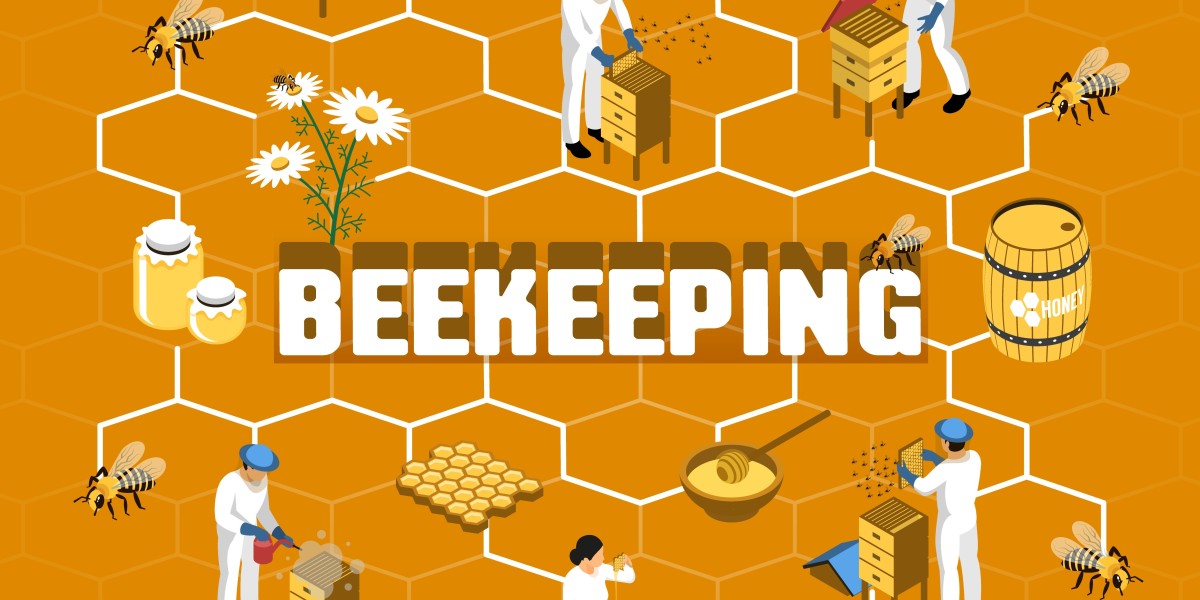Introduction: The Buzz Around Beekeeping and Technology
Bees are more than just honey producers—they play a vital role in global food production through pollination. Yet, beekeepers worldwide are facing alarming hive losses due to environmental stress, diseases, and climate change. Enter the Internet of Things (IoT): a groundbreaking solution that's transforming beekeeping. By embedding smart sensors inside hives, beekeepers can now monitor bee health in real-time, detect early signs of trouble, and take timely action. This blog explores the exclusive role of IoT in saving beekeeping, focusing on how smart sensor technology helps in monitoring bee health effectively.
Why Beekeeping Needs a Tech Upgrade
The global bee population has seen a drastic decline over the past decade. Key challenges include:
Colony Collapse Disorder (CCD)
Parasites and diseases like Varroa mites and Nosema
Pesticide exposure
Poor nutrition due to habitat loss
Climate variability and extreme weather
Traditional methods of hive inspection are manual, time-consuming, and often reactive rather than preventive. The need for real-time, non-invasive hive monitoring has never been more urgent—and that’s where IoT steps in.
What is an IoT Beehive Monitoring System?
An IoT Beehive Monitoring System is a network of smart sensors and connected devices placed inside or around a hive to monitor various health and environmental parameters. These systems transmit real-time data to a central platform (often via mobile apps or cloud dashboards), enabling remote hive management and data analysis.
Common Components:
Temperature and Humidity Sensors
Weight Scales
Acoustic Sensors (to monitor bee activity)
GPS Modules
Camera Systems
Air Quality Sensors
Wi-Fi, LoRaWAN, or GSM modules for data transmission
How IoT Monitors Bee Health Using Smart Sensor Technology
Smart sensors are the heartbeat of IoT-enabled beehive monitoring. Here's how they contribute to tracking and enhancing bee health:
1. Temperature and Humidity Control
Bees maintain precise environmental conditions inside the hive. Deviations can indicate queen failure or disease. Sensors track:
Brood temperature (ideal: ~35°C)
Hive humidity (kept between 50–60%)
Real-time alerts help beekeepers intervene before damage is done.
2. Hive Weight Monitoring
Weight fluctuations reflect nectar intake, honey production, and hive population dynamics. A sudden weight loss could indicate:
Swarming
Theft
Colony death
Data-driven insights allow for timely action.
3. Acoustic Monitoring
Microphones pick up unique frequencies produced by bees, especially:
Queen piping
Swarming signals
Distress calls
Machine learning models analyze these audio patterns to flag unusual behavior.
4. Bee Traffic Analysis
Using cameras or infrared sensors at hive entrances, IoT systems count incoming and outgoing bees. A drop in activity could point to:
Pesticide poisoning
Predation
Harsh weather conditions
5. GPS and Theft Prevention
Some smart hives come with GPS tracking to prevent hive theft and to monitor migratory beekeeping.
Benefits of IoT in Beekeeping
The adoption of IoT in apiculture is creating a ripple effect across the agricultural ecosystem.
Proactive Health Management
Beekeepers can detect early signs of illness or stress, reducing the need for harmful chemical treatments.
Reduced Manual Inspections
Fewer disruptions to the hive environment mean healthier colonies and higher productivity.
Data-Driven Decisions
Long-term trends help in:
Breeding stronger bees
Optimizing hive placement
Managing seasonal changes
Sustainability
IoT supports environmentally friendly beekeeping by improving resource use and minimizing colony losses.
Use Cases and Success Stories
Europe’s Smart Hive Initiatives
Countries like France and Germany have implemented nationwide smart hive programs to track bee health and correlate it with pesticide usage and climate trends.
?? India’s Digital Beekeeping
Startups like Ambee and BeeSensing are introducing cost-effective IoT kits to empower small-scale Indian beekeepers with real-time data.
?? Precision Apiculture in the USA
Farmers are integrating smart hives with crop pollination schedules, increasing yields and maintaining biodiversity.
Challenges and Future Opportunities
Challenges:
High initial costs for small beekeepers
Need for stable internet and power supply in rural areas
Data privacy and security concerns
Future Scope:
AI-powered diagnostics for real-time disease prediction
Blockchain for hive-to-honey traceability
Integration with weather forecasting and agricultural systems
Conclusion: A Smart Future for Beekeeping
The marriage of beekeeping and technology is not just an innovation—it’s a necessity. With IoT beehive monitoring systems, beekeepers gain a powerful ally in the fight against colony loss and environmental decline. By using smart sensor technology, we're not just keeping bees alive—we’re creating a sustainable future for agriculture and biodiversity.










